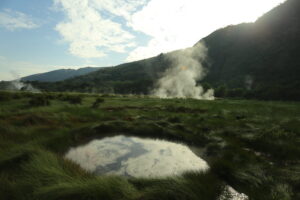Toro-Semliki Wildlife reserve – all inclusive safari in Uganda

Toro-Semliki Wildlife reserve is a conservation protected area in th western Region of Uganda near Ugand’s western border covering an area of 542 sqkm( 209 sq mi) and lies with in the districts of Kabarole and Ntoroko, The reserve is among the oldest protected areas in Uganda bordered in the northern by Africa’s greatest lakes, In the southern part lies Africa’s third highest mountain range Mountain Rwenzori, Beautiful escarpment ecotone lye in the far east. Toro-Semliki Wildlife reserve lies 20 km east of Semuliki National park. The dominant vegetation covering the reserve is the open acacia-combretum woodland and grassy Savannah as well as some extension swamps towards Lake Albert which support the harboring of multiple species like the forest mammals, central Africa, Key East African species and variety of bird life including Elephants, Lions and it is also a lion conservation area in Uganda, Uganda Kob, Water-buck, Buffalos, Giant forest Hog, Hippopotamus. Primates like chimpanzees, Baboons, Vervet monkeys, Red-tailed monkeys and white colobus. The reserve is also home to over 400 bird species like Tropical Boubal, , Black-billed Barbet, great white pelican among others. Note that the reserve contains the same key species as Murchison falls and Queen Elizabeth National Parks. The reserve is governed by Uganda Wildlife Authority. Activities in the reserve include Birding , Hiking and Nature walks, community walks, Game drives, Boat ride and Primate walk.
Accommodations: The reserve has a number of accommodations that will offer you the best accommodation facilities giving a true African experience from luxury to budget.
History Toro-Semliki Wildlife reserve
Toro-Semliki Wildlife reserve was first gazetted in 1926 by the colonial government making it one of the oldest protected areas in Uganda, since 2005 the area is considered a lion Conservation unit.




